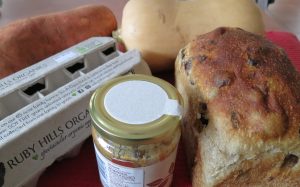| Average Australian | $300 a year / 1.8kWh a day / 400kg C02 per year |
|---|---|
| Smart renter | $160 a year / 1 kWh a day / 200kg C02 per year |
| Very smart renter | $35 a year / 0.2 kWh a day / 50kg C02 per year |
*Cost for an average Australian household is based on a 300-400 litre fridge/freezer and a 200 litre chest freezer with a total replacement value of $1200. Assuming that both will be replaced every 10 years.
Ask yourself the following questions:
Do you as a household regularly drink less than a carton of beer or 6 bottles of wine in one evening or have less than 12 parties a year yet have a bar or beer fridge?
- If yes, then cash it in, free up some space and save $100 a year (on top of the savings above). Your main fridge can keep enough drinks cold and you can get a bag of ice if you have the occasional party.
Do you store less than 100 litres worth of frozen goods in your standalone freezer?
- If yes, then use the freezer in your combination fridge/freezer and sell off your chest freezer and save $90-$180 a year.
Do you hardly eat frozen foods?
- If yes, you might not need a freezer at all meaning that you can swap your fridge/freezer combination for a standalone fridge as well as ditching the chest freezer.
- You can alternatively enjoy frozen foods by using them straight away after a trip to the supermarket or substitute other foods (e.g. dried peas for frozen peas or canned corn for frozen corn).

Do you regularly store tomatoes, potatoes, sweet potatoes, apples, pears, peaches, plums, oranges, lemons, limes, berries, melons, bananas, onions, garlic, honey, jam, maple syrup, avocadoes (unless very ripe), bread, butter, capsicums, squash, pickles, coffee or eggs in your fridge?
- They don’t need to be in the fridge so free up some space and put them in the pantry instead [1].
If you pair your electric food storage down to a 200-300 litre combination fridge freezer, you should pay around $100 a year to run it and $600 to buy it new which works out to $60 a year over a 10 year lifetime for the fridge, thus totalling $160 a year.
Further tips:
- Make sure that your fridge is located in a well ventilated area (usually with a minimum of 10cm clearance on all sides, refer to the owner’s manual).
- Set the thermostat for no colder than 4 degrees Celsius for a fridge and minus 18 degrees Celsius for a freezer.
- If you’re buying a new or second hand fridge, avoid gimmicks like ice makers and so called “smart fridges” with LCD displays. These fridges cost more and tend to consume more electricity [2].
The payback for making this change should be instant given that you’ll probably raise enough money from the sale of your freezer and fridge (if necessary) to buy a suitable standalone fridge or combination fridge/freezer.
See Very smart food storage for the ultimate in low powered food storage.
Further Reading:
[1] https://www.farmersalmanac.com/foods-dont-refrigerate-20518 [2] https://www.canstarblue.com.au/appliances/how-much-energy-does-a-refrigerator-use/